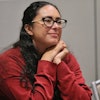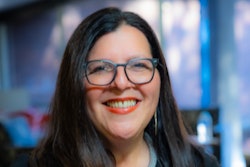Solving This Digital Dilemma
Early in my academic career, I was tapped on the shoulder, pulled aside and told that I was one of the kids considered bright enough to enter the school’s magnet program. It was junior high. And bored as I had indeed been in some of my math and science classes, enticing as the cutting-edge computer classes sounded, I had mixed emotions.
It sadly goes without saying that few students of color were selected for the program. So leaving mundane math also meant leaving many of my Black friends behind. But with a pledge to meet them at lunch and after school, I forged ahead into a curriculum full of science and technology’s marvels. The better portion of Takoma Park Intermediate School’s numerous minority students lingered in fundamental courses, largely unaware of the state-of-the-art explosion on the horizon.
Even then, the difference of a technology-centered curriculum was amazing.
Today — more than a decade and a World Wide Revolution later — the staggering discrepancies between the wired and information technology’s uninitiated threaten to create yet another underclass, another racial ravine. The digital underdogs of a high-tech world, far too many students of color are not hooked up to this high-tech eruption that is changing the planet we live on at a mind-boggling pace.
That is why I am pleased to take on the position of editor of Black Issues in Higher Education with this important special report on the digital divide. Technology’s awesome scope is quite simply, the story of the millennium. This digital dilemma is rearing its ugly head on campuses, in work environments and in communities across the country.
Chronicling the disparities that exist for students of color is, here at Black Issues, our journalistic responsibility. Bridging that gap falls largely in the heavy hands of our readers — higher education’s leaders and foot soldiers. Empowering you with stories that record some of your colleagues’ best efforts is the least we could do.
Our special package of articles begin on pg. 24, where Ronald Roach reports on the information technology boom occurring in our backyard here in Washington. If there’s any place with all the right ingredients — a combination of formidable colleges and universities, a large Black and Hispanic population and lots of high tech companies — it’s our nation’s capital and its surrounding suburbs. Yet the region is still failing to incorporate large numbers of minorities into the IT mix.
We are happy to report however, that higher education is ripe with promising practices. A high-tech consortium in northern Virginia seeks to get Black college students in line with the area’s IT industry (see pg. 29). The National Science Foundation is sponsoring a $6 million grant for minority-serving institutions to collaborate on advanced networking opportunities (see pg. 40). And a peek at the Massachusetts Institute of Technology’s Media Lab (see pg. 34) proves that postsecondary scientists have not forsaken digital divide issues in their research.
So perhaps one day, perhaps sooner rather that later, this digital divide will give way to a World Wide Wave of progress for students of color. Let’s hope so. Because this time, we just can not afford to leave our Black friends behind.
© Copyright 2005 by DiverseEducation.com















